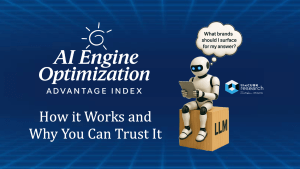With 2024 closing out and 2025 ahead of us, the application development landscape stands at the crossroads of innovation and complexity. With generative AI, edge computing, and lightweight architectures driving change, developers and organizations must embrace new strategies to stay competitive.
The Q4 AppDev Market Insights Report from Paul Nashawaty, practice Lead, and Sam Weston, industry analyst, captures the pulse of these transformative trends. It offers actionable insights into how the industry is reshaping to address emerging challenges and opportunities. This report provides a roadmap for innovation in 2025 and beyond, from simplifying cloud-native systems to embedding security across workflows.
What’s Shaping the AppDev Landscape?
1. Generative AI: A Catalyst for Change
Generative AI continues to redefine workflows, enabling real-time decision-making and automation at scale:
- Trust and Accuracy: AWS Bedrock’s safeguards against hallucinations set new benchmarks for AI adoption in regulated industries like healthcare and finance.
- Unstructured Data Quality: Anomalo’s advancements enable businesses to address complex datasets, improving AI-driven outcomes and ensuring compliance.
- Adoption Surge: By 2026, 75% of enterprises are expected to integrate generative AI into their workflows, changing how applications are developed and deployed.
2. Simplifying Cloud-Native Complexity
The market is shifting towards developer-friendly, scalable platforms:
- Lightweight Architectures: WebAssembly (Wasm) solutions like wasmCloud and Fermyon Spin enable portable, efficient, and secure deployments for edge computing.
- Kubernetes Simplification: Innovations like Mirantis Kubernetes Engine 4 and Istio’s ambient mode streamline service mesh adoption, reducing operational barriers.
- Developer Productivity: Internal developer platforms (IDPs) and self-service tooling empower developers to focus on innovation rather than infrastructure management.
3. Edge Computing Gains Momentum
As edge computing moves from a trend to a necessity, industries like IoT, retail, and automotive are leveraging its benefits:
- Reduced Latency: Solutions like Synadia’s NEX runtime bring compute closer to data sources, ensuring faster processing and enhanced security.
- Scalable Deployments: WebAssembly’s lightweight nature makes it ideal for distributed systems and resource-constrained environments.
4. Observability Redefined with AI
Observability is evolving from reactive monitoring to proactive, actionable analytics:
- AI-Powered Insights: Tools like Dynatrace’s Davis CoPilot claim to reduce mean time to resolution (MTTR) by up to 60%, providing predictive analytics and actionable recommendations.
- Data Integration: AWS’s SageMaker Zero-ETL capabilities simplify data observability and unlock real-time insights across systems.
5. Security as a Development Imperative
The rise of DevSecOps highlights the importance of embedding security at every stage of the development lifecycle:
- AI-Driven Security: Organizations are increasingly adopting tools to address vulnerabilities early, ensuring compliance while reducing risks.
- Integrated Workflows: Solutions like Traefik’s API Sandbox enhance API security and interoperability, enabling seamless integrations in complex environments.
Why This Matters
The trends identified in this report reflect a collective push toward innovation, efficiency, and resilience in application development. For stakeholders across the ecosystem, these shifts represent both challenges and opportunities:
- Developers: Empowered by AI-driven tools and self-service platforms, developers can streamline workflows and focus on impactful tasks.
- IT Managers: Simplified cloud-native architectures and observability solutions allow faster responses to system challenges, improving operational efficiency.
- Business Leaders: Scalable, secure, developer-centric platforms position organizations to thrive in competitive and dynamic markets.
Key Challenges to Overcome
- Data Quality for AI: Unstructured data presents a significant hurdle for generative AI workflows, with 65% of organizations citing data inconsistencies as a barrier.
- Hybrid Cloud Complexity: Managing multi-cloud architectures remains challenging, with interoperability and security as key pain points.
- Developer Skill Gaps: Nearly 70% of IT leaders struggle to find talent proficient in AI, observability, and cloud-native technologies.
- Cultural Resistance: Organizations must foster a culture of experimentation to drive continuous improvement and adopt new methodologies.
Looking Ahead: Strategic Recommendations
Organizations must embrace strategies that drive efficiency, innovation, and resilience to stay competitive in a fast-evolving digital landscape. Investing in AI and automation can reduce manual workloads, streamline operations, and empower more intelligent decision-making. Transitioning to lightweight architectures like WebAssembly offers scalable solutions for edge and serverless workloads while optimizing resource usage. Embedding security early through DevSecOps practices ensures compliance and enhances application reliability. Lastly, fostering developer enablement by investing in platforms and training empowers teams to innovate freely, without the complexity of managing infrastructure, accelerating time-to-market and business growth.
- Invest in AI and Automation: Adopt tools that reduce manual tasks, streamline workflows, and enhance decision-making capabilities.
- Transition to Lightweight Architectures: Explore WebAssembly for scalable edge and serverless workloads that minimize resource consumption.
- Embed Security Early: Leverage DevSecOps practices to ensure compliance and enhance application reliability.
- Foster Developer Enablement: Invest in platforms and training that empower developers to innovate without the burden of managing complex infrastructure.
To thrive in today’s digital era, organizations must prioritize efficiency and innovation. They can do this by adopting AI-driven automation, lightweight architectures like WebAssembly, and early security practices through DevSecOps. Empowering developers with modern platforms and training further accelerates innovation while reducing operational complexity.
Download the Q4 AppDev Market Insights Report
This report provides a detailed analysis of the trends shaping the future of application development. From generative AI and edge computing to developer-centric tools and security innovations, it’s your guide to staying ahead in this market.



